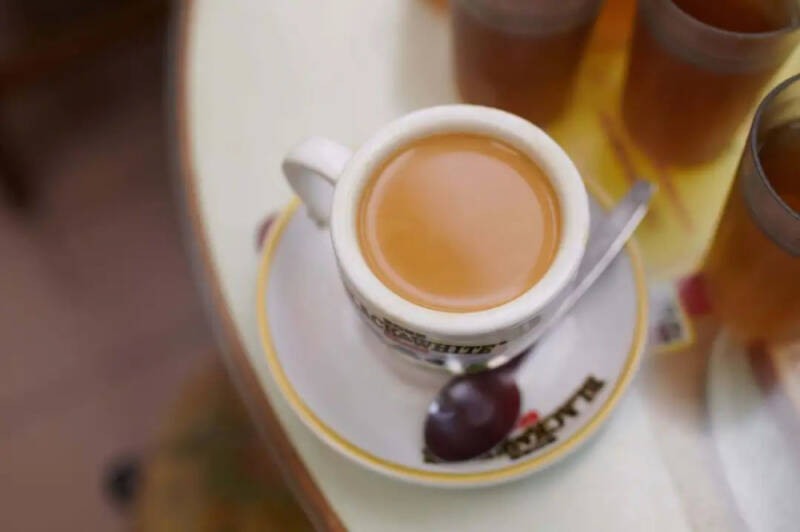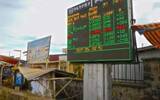Origin of the historical story of Yuanyang Coffee: Why can't I sleep after drinking Yuanyang milk tea?
I don't know if you have ever had the experience of Qianjie: when I was a student, I went to a Hong Kong-style cafe for the first time, saw a "mandarin duck" on the menu, ordered a cup with curiosity, and the entrance was mellow, silky and full-bodied, but I also opened my eyes until dawn that night. Then I didn't dare to order it easily.

It wasn't until I grew up that I found that the caffeine content of this thing was even better than that of espresso. No wonder everyone complained that they couldn't sleep or even get excited all night after drinking it.
What is "mandarin duck"?
As the saying goes, only the mandarin duck envies the immortal. In Chinese, mandarin duck first refers to a kind of waterfowl that grows in eastern Asia and often goes in pairs. "Yan" refers to male and "duck" refers to female, so the word mandarin duck is often regarded as a symbol of love and companionship.

Judging from today's daily conversation, especially in the eyes of South China F3 (Guangdong, Guangxi, Hainan) and people in Hong Kong and Macao, because "mandarin duck" means two or two, it is often used to describe food made up of two different tastes. A double drink of Hong Kong-style coffee and silk stockings milk tea is the "Hong Kong-style mandarin duck" that we often hear nowadays. Since there is milk tea and coffee, in theory, we can call this drink popular in the whole Cantonese area "Yuanyang Milk Tea", or we can call it "Yuanyang Coffee". After all, it occupies both categories.
The "Mystery of Life" of Hong Kong-style Mandarin Duck
The mandarin duck first appeared in Hong Kong has long been widely known, but there are many different theories about its birth and the origin of its name. Among them, the most popular version is that it is related to workers who make a living at the docks every day.
The habit of drinking tea and coffee in Hong Kong was introduced by the British during the colonial period. The early English milk tea was made of Ceylon black tea, fresh milk and sugar. Both tea and milk were expensive and belonged to the symbol of high society, which the local working class could not afford to consume.
In the 1950s, Hong Kong people were mostly engaged in manual work such as handling, construction and seafarers, and there was a need to refresh and replenish their physical strength. Shops in Dapai stalls improved British milk tea. The raw material is made of broken local tea and other teas, and then the tea flavor is thickened by turning, mixed with light milk, increasing the proportion of sugar and milk, and creating a strong, calorie and economical Hot Tea, HK Style.
It is rumored that at that time, the workers on the dock had to drink a drink that could not only replenish their physical strength but also refresh themselves quickly, so some people thought of mixing bitter but exciting coffee into silk stockings milk tea to not only refresh and quench their thirst, but also immediately resurrect with blood. soon this way of drinking spread. A cup of mandarin duck can be said to witness the simultaneous development of coffee and milk tea in Hong Kong.
When I checked the relevant records in Qianjie, I found that in addition to the wharf story, there is another saying that "Hong Kong-style mandarin ducks are related to traditional Chinese medicine." Huang Jiahe, chairman of the Jin Baijia Group and president of the Hong Kong Restaurant Association, who is known as the "father of milk tea", mentioned the birth of Hong Kong-style mandarin ducks in an interview: "the mandarin duck appeared about 1955, when diners responded to milk tea to cut the stomach, but the coffee was dry and hot. So the master of Haian Coffee Ice House took the balance between the two and made the mandarin duck. "
As for the drink named "Yuanyang", there are also different views. Some people say that mandarin ducks are inseparable and unusually harmonious. The collocation of coffee and milk tea is taken from this characteristic, it not only retains the smoothness of milk tea, but also has the unique aroma of coffee, the two complement each other, so it is named "Yuanyang".
It is also said that coffee and milk tea are obviously two different drinks, and their colors are dark and light, but they can be well reconciled together, just like the mandarin ducks of both sexes, despite their great differences in appearance, they always appear in pairs, hence the name.
Why stay up all night after drinking mandarin duck?
With the popularity of tea restaurant culture, the "three swordsmen in the teahouse", including Yuanyang, have now spread all over the world, becoming not only the representative of Hong Kong's street food culture, but also an old flavor in the memory of countless overseas Chinese.
It is said that a good mandarin duck requires "coffee, three teas and seven servings of milk," that is, three servings of coffee and seven portions of tea, mixed with an appropriate amount of light milk. "it's not milk tea, it's not coffee, it doesn't have either flavor, it's just a good mandarin duck." Huang Jiahe believes that making Yuanyang is more difficult than making milk tea.
Because mandarin ducks mix two basic categories at the same time, the coffee and tea in this classic Hong Kong drink contain a lot of caffeine, which is a powerful pick-me-up for most people. Therefore, if it is for children, some cafes will use sweet Awatian and Hollick to make a decaffeinated version of "Children's Mandarin Duck", so that children can also enjoy the happiness of adults.
Qianjie also said that according to the publicly reported data, the amount of caffeine consumed by a 700 ml cup of Hong Kong-style mandarin duck is about 510 mg, which is equivalent to about 3 cups of American style. If you are caffeine intolerant and don't want to open your eyes till dawn, remember not to try this kind of Hong Kong-style mandarin duck or Hot Tea, HK Style, otherwise.
-END-
Important Notice :
前街咖啡 FrontStreet Coffee has moved to new addredd:
FrontStreet Coffee Address: 315,Donghua East Road,GuangZhou
Tel:020 38364473
- Prev

Ethiopia introduces new regulations and coffee bean prices may rise!
According to reports, the Ethiopian Commodity Exchange (ECX) is recently introducing a new export pricing mechanism for green coffee beans. Every week, the price of green coffee beans will be calculated based on the Arabica coffee futures price on the ICE Intercontinental Exchange in New York and the current exchange rate of the Commercial Bank of Ethiopia., thereby helping farmers
- Next

The Houthi armed forces continue to attack on the Red Sea again!
According to media reports, there have been recent reports that although the Houthi armed forces have always claimed that the targets of attacks are limited to relevant ships of Israel and its allies, the actual situation is not the case. The targets of attacks are all over the country. Moreover, the Houthi armed forces collect "security fees" to ensure the passage of ships, while ships that do not pay face
Related
- Being chased out of the rain in front of Starbucks?! Store: Sheltering from rain under umbrellas poses a safety hazard
- The white moonlight has changed?! Lucky launches "Big Winter Pear American"
- Hand-brewed coffee three-stage method, high-sweet and universal brewing method to share! What does the high sweet water level of hand-brewed coffee mean?
- What is the difference between raw, refined and full espresso coffee? How to extract espresso and taste good?
- A complete list of coffee bean names and their meanings! What is Yejia Shefi coffee? Where is Mantelin coffee?
- What grade does Arida Manor Kaduai coffee beans belong to? What treatment is Arida ASD slow anaerobic sun exposure?
- The milk tea cup becomes smaller?! Overlord Tea Girl launches a new "Return to Yunnan" series
- Accused of selling counterfeit and high-priced coffee beans! Well-known boutique coffee brand "Oukelao" bowed and apologized!
- How to make espresso dumplings? Can I eat coffee and glutinous rice balls together?
- Save the unformed and stagnant powder cakes in one second! What is the problem with stagnant water in the powder bowl of the espresso machine?

